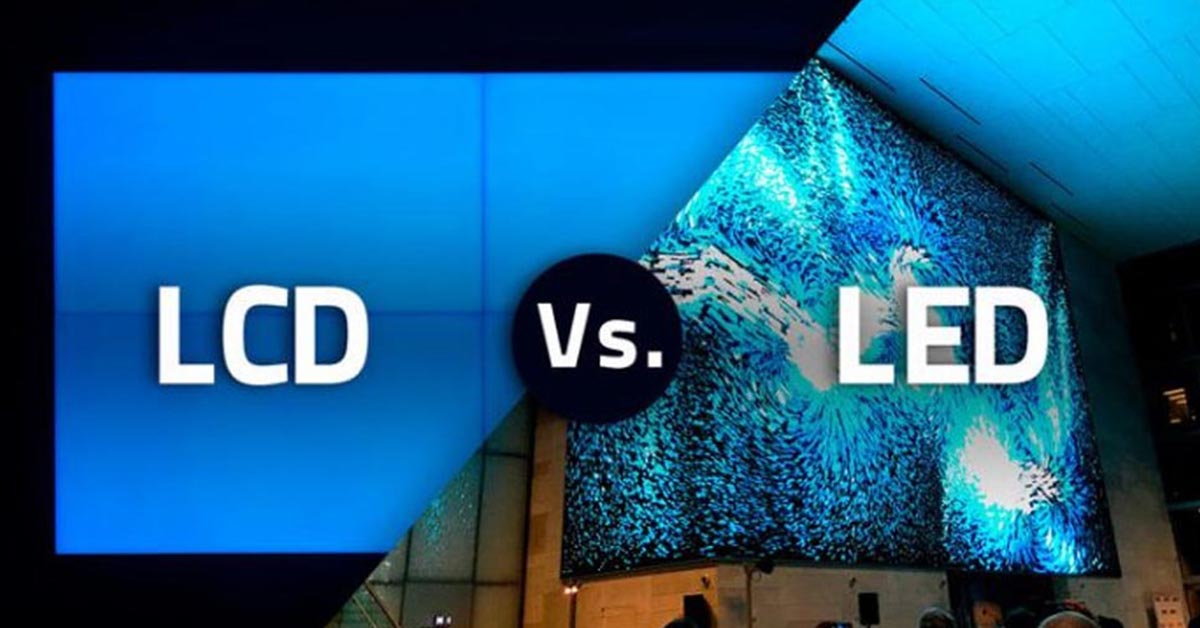
Integrated Vs. Separated LED Display Screen Designs:What is Difference
Introduction:
LED display screens have become a favorite among advertisers, boasting features such as the ability to play dynamic videos, showcase detailed images and text, high resolution, long viewing distances, wide advertising coverage, high reach, broad viewing angles, and seamless large-area splicing. To cater to diverse user needs, LED display screen manufacturers have developed products with varying performance. This blog will provide a brief overview of the comparison between integrated LED display screens (where the light source and driver are combined) and separated LED screens (with distinct light sources and drivers).
Integrated vs. Separated LED Display Screens:
New or used LED display screens are constructed by seamlessly assembling unit modules or unit cabinets, and these modules are composed of LED chips. LEDs, or light-emitting diodes, are semiconductor devices that emit visible light when electrons recombine with holes in the device. LED displays are commonly used to showcase text, images, videos, and other information.
One key difference lies in the design of the LED circuit board, which comprises a light board and a driver board. The market often sees the use of integrated LED screens, where LED lights and driver ICs are encapsulated on a single PCB board. In contrast, separated LED screens have LED lights packaged on one PCB board and driver ICs on another. The connection between modules is established using pin headers and sockets in both designs.
Comparison Points:
Heat Dissipation:
Integrated LED screens have both LED lights and IC drivers encapsulated on a single PCB, potentially leading to slower heat dissipation.
Separated LED screens, on the other hand, benefit from faster heat dissipation as LED lights and driver ICs are on separate PCBs.
Cost:
Integrated LED screens are more cost-effective due to the use of a single PCB board.
Separated LED screens incur higher costs as they require two separate PCB boards.
Maintenance:
Separated LED screens offer easier maintenance since LED lights and IC drivers are separate and can be replaced independently.
Production Efficiency:
Integrated LED screens have higher production efficiency because LED lights and IC drivers are encapsulated on the same PCB, allowing for faster assembly.
Separated LED screens have a slightly slower production process as they involve connecting independent PCBs for LED lights and IC drivers.
Assembly Speed:
Integrated LED screens have a faster assembly speed, as they only require connecting the power and data lines to a single PCB.
Separated LED screens involve connecting power and data lines to two independent PCBs, resulting in a slightly slower assembly speed.
When to Choose Separated LED Screens:
Separated LED screens may be preferred in the following scenarios:
1) When efficient heat dissipation is crucial without compromising display quality, especially in cases of high LED density. When the density of LED lamp beads is very high, the heat generated by the driver IC of LED screenwill be very high when working, and the heat generated by the lamp beads will also be very large. The heat from the driving IC and lamp beads will directly affect the LED light facing the IC through the PCB, causing the color of the LED light to change. This would not happen if the lamp driver was separated.
2) For LED screens use plug-in LEDs, where the LED footprints may interfere with the proper placement of backside driver ICs.
3) When the LED screen’s pixel pitch is very small, affecting the layout of PCB board traces.
Conclusion:
Integrated LED display screens are commonly used for indoor applications due to their lower chip count, lower brightness, and consequently, lower heat generation. On the other hand, outdoor LED screens may opt for separated designs based on installation environment requirements. In most cases, integrated LED screens are prevalent in outdoor LED displays. Customers can make informed choices based on their specific needs and requirements.
By knowing the difference between integrated and separated LED screens, You can make informed decisions when selecting a screen that aligns with your preferences and use cases.







